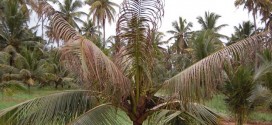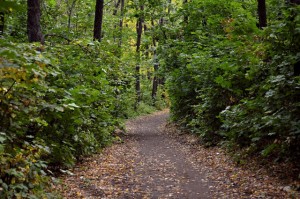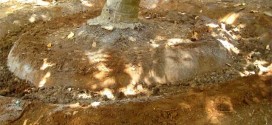Silviculture is the practice of controlling the establishment, growth, composition, health, and quality of forests to meet diverse needs and values. The name comes from the Latin silvi- (forest) + culture (as in growing). The study of forests and woods is termed silvology.
To some the distinction between forestry and silviculture is that silviculture is applied at the stand level and forestry is broader. For example John D. Matthews says “complete regimes for regenerating, tending, and harvesting forests” are called “silvicultural systems”.
So active management is required for silviculture. Whereas forestry can be natural, conserved land without a stand level treatment being applied. A common taxonomy divides silviculture into regenerating, tending and harvesting techniques.
Regeneration
Forest regeneration is the act of renewing tree cover by establishing young trees, generally promptly after the previous stand or forest has been removed. The method, species, and density are chosen to meet the goal of the landowner.
It maybe divided into natural regeneration:
“Human-assisted natural regeneration” means establishment of a forest age class from natural seeding or sprouting in an area after harvesting in that area through selection cutting, shelter (or seed-tree) harvest, soil preparation, or restricting the size of a clear-cut stand to secure natural regeneration from the surrounding trees.
and artificial regeneration.
Tree provenance is important in artificial regeneration. Good provenance takes into account suitable tree genetics and a good environmental fit for planted / seeded trees in a forest stand. The wrong phenotype can lead to failed regeneration, or poor trees that are prone to pathogens and undesired outcomes.
Whichever method is chosen it can be assisted by tending techniques also known as Intermediate stand treatments.
Tending
Enrichment planting
This means increasing the planting density (i.e., the numbers of plants per hectare) in an already growing forest stand.”
Release treatments
- Weeding: A treatment implemented during a stand’s seedling stage which removes or reduces herbaceous or woody shrub competition.
- Cleaning: Release of select saplings from competition by overtopping trees of a comparable age. The treatment favors trees of a desired species and stem quality.
- Liberation Cutting: A treatment that releases tree seedling or saplings by removing older overtopping trees.
Thinning
The goal of thinning is to control the amount and distribution of available growing space. By altering stand density, foresters can influence the growth, quality, and health of residual trees. It also provides an opportunity to capture mortality and cull the commercially less desirable, usually smaller and malformed, trees. Unlike regeneration treatments, thinnings are not intended to establish a new tree crop or create permanent canopy openings.
Common thinning methods:
Crown Thinning (thinning from above or French method)
Selection Thinning (thinning of dominants or Borggreve method)
Mechanical Thinning (row thinning or geometric thinning)
Free Thinning
Ecological thinning is where the primary aim of forest thinning is to increase growth of selected trees, favoring development of wildlife habitat (such as hollows) rather than focusing on increased timber yields. Ecological thinning can be considered a new approach to landscape restoration for some types of eucalypt forests and woodlands in Australia.
Pruning
Pruning, as a silvicultural practice, refers to the removal of the lower branches of the young trees (also giving the shape to the tree) so clear knot-free wood can subsequently grow over the branch stubs. Clear knot-free lumber has a higher value. Pruning has been extensively carried out in the Radiata pine plantations of New Zealand and Chile, however the development of Finger joint technology in the production of lumber and mouldings has led to many forestry companies reconsidering their pruning practices. “Brashing” is an alternative name for the same process.
Forest care
This may be reducing browsing. It can also be techniques for dealing with forest pathogens.
Common methods
Silvicultural regeneration methods combine both the harvest of the timber on the stand and re-establishment of the forest. The proper practice of sustainable forestryshould mitigate the potential negative impacts, but all harvest methods will have some impacts on the land and residual stand. The practice of sustainable forestry limits the impacts such that the values of the forest are maintained in perpetuity. Following are some common methods:
- Single-tree selection – The single-tree selection method is an uneven-aged regeneration method most suitable when shade tolerant species regeneration is desired. It is typical for older and diseased trees to be removed, thus thinning the stand and allowing for younger, healthy trees to grow. Single-tree selection can be very difficult to implement in dense or sensitive stands and residual stand damage can occur.
- Group selection – The group selection method is an uneven-aged regeneration method that can be used when mid-tolerant species regeneration is desired. The group selection method can still result in residual stand damage in dense stands, however directional falling can minimize the damage. Additionally, foresters can select across the range of diameter classes in the stand and maintain a mosaic of age and diameter classes.
- Clearcutting – An even-aged regeneration method that can employ either natural or artificial regeneration. Clearcutting can be biologically appropriate with species that typically regenerate from stand replacing fires or other major disturbances, such as lodgepole pine (Pinus contorta). Alternatively, clearcutting can change the dominating species on a stand with the introduction of non-native and invasive species as was shown at the Blodgett Experimental Forest near Georgetown California. Additionally, clearcutting can prolong slash decomposition, expose soil to erosion, impact visual appeal of a landscape and remove essential wildlife habitat. It is particularly useful in regeneration of tree species such as Douglas-fir (Pseudotsuga menziesii) which is shade intolerant.
- Seed-tree – An even-aged regeneration method that retains widely spaced residual trees in order to provide uniform seed dispersal across a harvested area. In the seed-tree method, 2-12 seed trees per acre (5-30/ha) are left standing in order to regenerate the forest. They will be retained until regeneration has become established at which point they may be removed. It may not always be economically viable or biologically desirable to re-enter the stand to remove the remaining seed trees. Seed-tree cuts can also be viewed as a clearcut with natural regeneration and can also have all of the problems associated with clearcutting. This method is most suited for light-seeded species and those not prone to windthrow.
- Shelterwood – A regeneration method that removes trees in a series of three harvests: 1) Preparatory cut; 2) Establishment cut; and 3) Removal cut. The method’s objective is to establish new forest reproduction under the shelter of the retained trees. Unlike the seed-tree method, residual trees alter understory environmental conditions (i.e. sunlight, temperature, and moisture) that influence tree seedling growth.
- Coppicing – A regeneration method which depends on the sprouting of cut trees. Most hardwoods, the coast redwood, and certain pines naturally sprout from stumps and can be managed through coppicing. Coppicing is generally used to produce fuelwood, pulpwood, and other products dependent on small trees. In Compound coppicing or coppicing with standards, some trees of the highest quality trees are retained for multiple rotations in order to obtain larger trees for different purposes. A close relative of coppicing is pollarding.
- Variable retention – A harvesting and regeneration method which is a relatively new silvicultural system that retains forest structural elements (stumps, logs, snags, trees, understory spieces and undisturbed layers of forest floor) for at least one rotation in order to preserve environmental values associated with structurally complex forests.
 Karshika Keralam – A site for Agricultural Enthusiasts
Karshika Keralam – A site for Agricultural Enthusiasts




